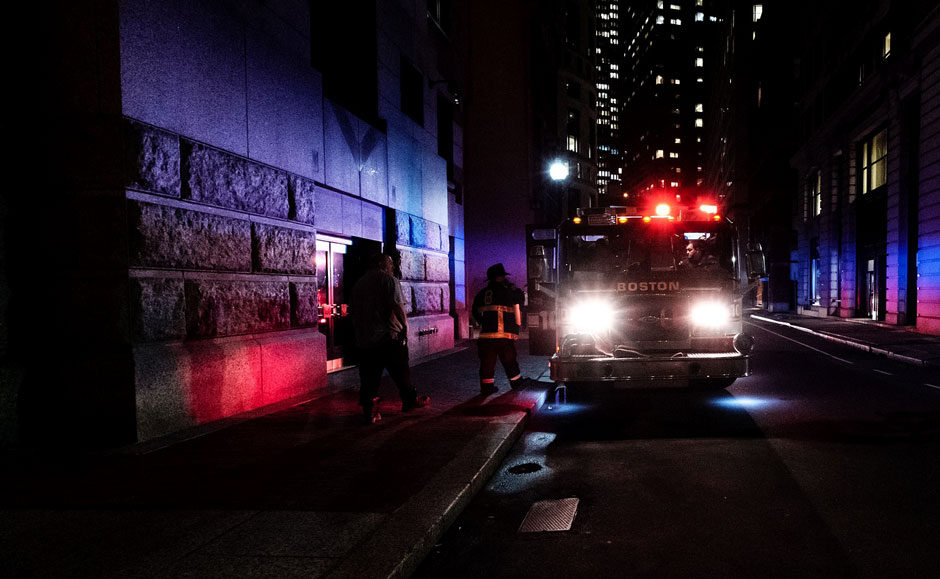Drugged Driving: How the Opioid Epidemic Affects Traffic Safety
You’ve probably seen commercials warning viewers of the dangers of drinking and driving. Maybe you’ve even seen one about texting and driving, or you’ve caught a news story about how drowsy driving affects truck drivers. But what about drugged driving? Turn on any news station and you’ll see story after story about how the United […]

October 6, 2017

You’ve probably seen commercials warning viewers of the dangers of drinking and driving. Maybe you’ve even seen one about texting and driving, or you’ve caught a news story about how drowsy driving affects truck drivers. But what about drugged driving?
Turn on any news station and you’ll see story after story about how the United States is currently facing an opioid epidemic. How does this epidemic affect traffic safety?
Looking at the Numbers

According to The Washington Post, 43 percent of drivers in fatal crashes in 2015 had used a legal or illegal drug. By comparison, only 37 percent tested above the legal limit for alcohol.
The AP reported a slew of increased drug-related crashes across the country. In Ohio, drug-related crashes increased more than 21 percent from 2013 to 2016. In Pennsylvania, drug-related crashes jumped from around 3,000 in 2011 to just over 4,000 in 2016.
The stories from emergency services personnel are astounding. Many police departments have started having their officers carry naloxone, a drug that can reverse an opioid overdose. Sold as a nasal spray, the drug is commonly known by its trade name, Narcan. Officers in Quincy, a suburb of Boston, Massachusetts, administered Narcan 221 and reversed 211 overdoses from 2010 to 2014, according to USA Today.
Many fire rescue personnel are also carrying the drug, according to the AP. If a person is unconscious when help arrives, they’ll often administer the drug blindly, not sure if a person has actually overdosed. Naloxone can’t hurt you if you haven’t overdosed, so it’s a risk-free way of trying to make sure a person receives the medical attention they need after an accident.
At home in Indiana, the numbers are just as grim. The Indiana State Department of Health saw a 60-percent increase in reports from 2011 to 2015 of non-fatal emergency room visits due to opioid overdoses. The counties with the most opioid overdoses per 100,000 in population in Indiana include Madison, Blackford, Fayette, Ohio, and Scott counties.
The Stories Behind the Numbers

Numbers can look impressive, but they don’t always convey the gravity of a situation. Looking at multiple accounts of drugged driving accidents can help show just how widespread the epidemic is:
- In Williamsport, Pennsylvania, a city of just 30,000, police responded to 12 overdose reports in one day.
- Cleveland police had to give a man 10 doses of naloxone to revive him after he had crashed his car into a pole.
- Police in Vermillion County, Indiana, found a syringe of heroin in the car of a man who crashed into a median on I-74.
- A fuel truck driver overdosed while parked at a gas station in Cleves, Ohio. The driver was on the clock at the time of the incident.
- A Chicago man who snorted heroin and ingested Vicodin thanked the police who arrested him and administered three shots of naloxone to save his life, saying, “I need help.”
How Do Drugs Affect One’s Ability to Drive?

Like alcohol, drugs affect your ability to drive. However, a person’s symptoms will likely differ depending on what kind of drug they took.
Marijuana, for example, can slow a driver’s reaction time, decrease their coordination, and inhibit them from correctly judging time and distance. Cocaine and methamphetamine can cause aggressive, reckless driving, according to the National Institute on Drug Abuse.
Often, a person who is driving while drugged is not under the influence of just one substance. The driver might have mixed alcohol and opioids or taken multiple drugs at once. Research shows that use of alcohol and marijuana together makes drivers more impaired than drivers who just used one of the substances.
Because many opioids are legal drugs prescribed by doctors, the medical community has a good idea of how these drugs may affect someone’s ability to drive. Opioids cause slow reaction time, drowsiness, and clouded judgment, especially when they are first started or their dosage is increased, according to the National Center for Biotechnology Information. Most doctors agree that patients should avoid driving or operating heavy machinery until they’ve determined a stable dose. Typically, doctors wait until patients have been on a stable dose for a week and have felt no cognitive changes before clearing them to drive.
Help from an Indiana Car Accident Attorney
If you’ve been injured in a car accident through no fault of your own, you deserve compensation. But if you’ve been injured in a car accident because someone decided to drive while intoxicated, whether by alcohol, opioids, or other drugs, you deserve justice.
Hensley Legal Group can help. Call us today or contact us online for a free consultation.